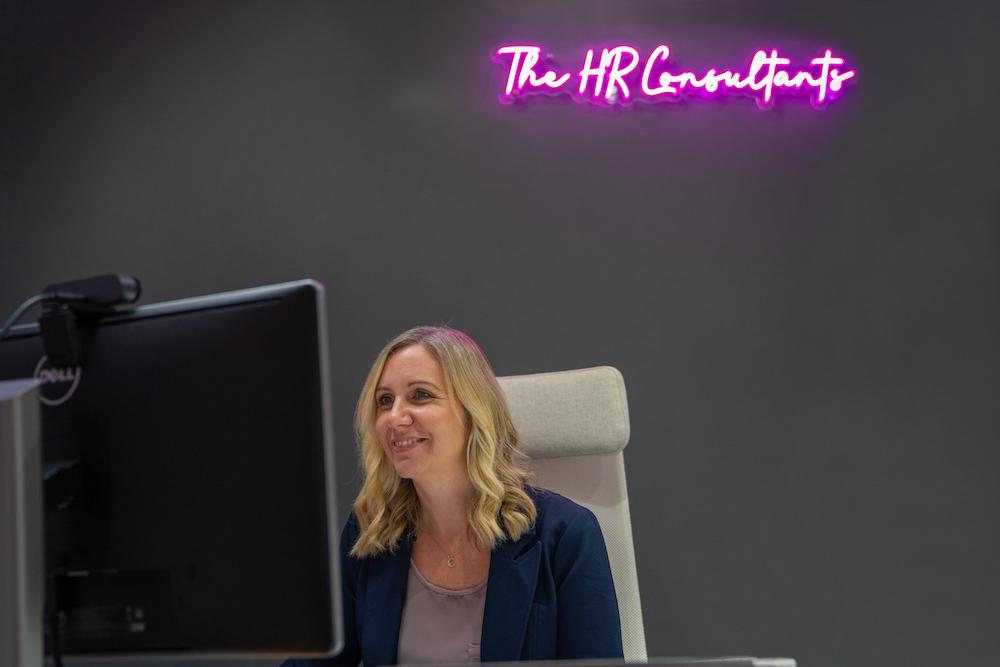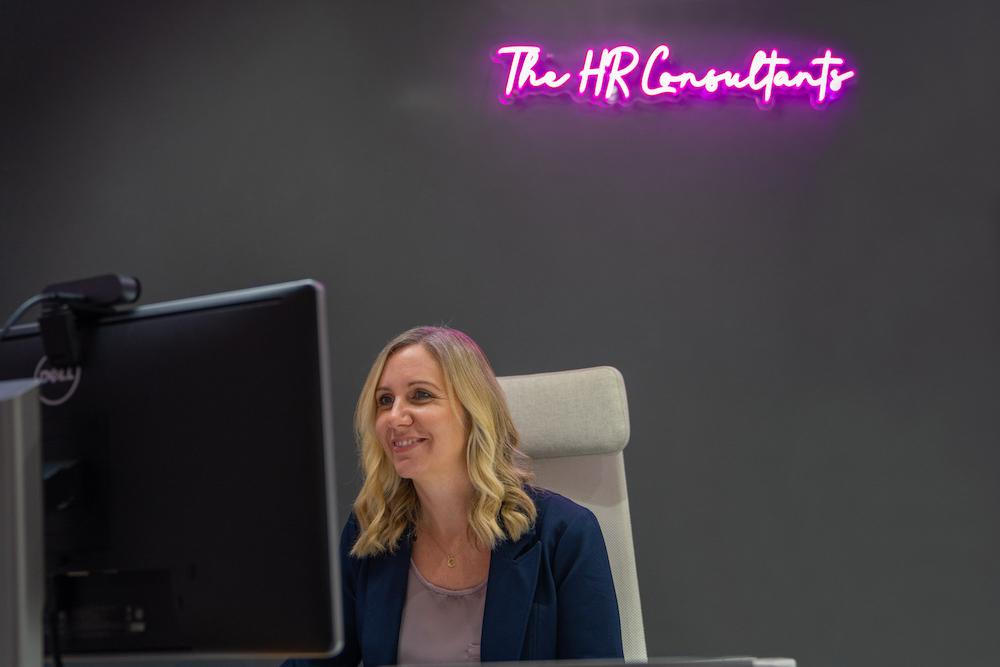"A study about What Drives Employee Engagement revealed that companies with high employee engagement outperform their peers by up to 202%.
The significance of this number cannot be taken lightly, and it can only signify one thing. The importance of human resource management (HRM) cannot be underestimated, as it can be the key to realising your ultimate business objectives.
Throughout this guide, The HR Consultants will explain the core principles of hard and soft human resource management and the essential differences between both strategies. We will also help you understand how to converge these methods to not just coexist but to synergistically push your company forward. It's all about balancing the skill of managing people with performance metrics, leading you to milestones of achievements and ultimately, the business success you had envisioned.

A Brief Overview
The study of soft and hard HRM reveals stark contrasts within the field. Hard human resource management (Hard HRM), is data-driven and strategic. It emphasises workforce efficiency, viewing employees as gears in the business machinery.
On the flip side, soft human resource management (Soft HRM) focuses on employee empowerment. It aims to encourage innovation and dedication through a more humanitarian approach.
Exploring the Essence of Hard and Soft HRM Models
The exploration of human resource management reveals a clear division encompassing two opposing methods: soft and hard HRM. This division serves as a roadmap for your company values and employee engagement strategies, and a deep understanding of their impact is necessary to achieve your business objectives and ultimately, your business success.
The Core Philosophy of Soft HRM Model
At the heart of soft human resource management lies the belief in valuing employees as vital to the organisation. Soft HRM champions empathy and extensive staff support, marking its true ethos.
A more democratic leadership style underpins soft HRM practices to empower employees and encourage innovation in the workforce. This transparent business model promotes inclusivity and boosts employee morale, which can ensure productivity from your most important resource: a motivated workforce.
A positive employee experience, personal growth are professional development are all key features of this soft HRM approach, and all result in employee satisfaction.
""Treat employees like they make a difference and they will.""
— Jim Goodnight, CEO of SAS
Remember, when you treat employees with respect and openness, and provide them with training opportunities to shape their specific skills, you will boost your company's retention rates and ensure the loyalty of your top talent.
Case Study: Google's Transformation in HR Strategy: People Operations
Google has redefined current trends in the HR department by renaming it ""People Operations,"" indicating a shift toward a more analytical and systematic approach to workforce management.
The backbone of this transformation is the ""people analytics team,"" a group committed to integrating rigorous data analysis into all aspects of human resources. This team's objective is to apply the same level of precision to people management decisions as is typical in engineering decisions, using advanced analytics and algorithmic approaches, always keeping employees at the centre of their operations.
Led by Vice President Laszlo Bock, Google's strategic approach is distinguished by its reliance on data-driven decision-making, marking a departure from traditional subjective HR methods and turning into renowned HR leaders.
Want to follow in Google's footsteps? Check our guide on developing your company's people strategy.
Defining Hard HRM and Its Operational Focus
In contrast, a hard HRM strategy adopts a more pragmatic and quantifiable approach. Its main features include performance metrics, cost-effectiveness, and the pursuit of specific company needs and organisational goals.
This somewhat old-fashioned style of leadership aligns with your company's strategic aims, advocating for efficiency and cost control. A hard HRM approach views employees as valuable assets, prioritising a high return on investment and often employing a more directive leadership style by HR managers.
Simply put, hard HRM revolves around realising your business goals, by viewing employees as a company investment that must yield the required performance results.
Contrasting Approaches to Employee Management
Soft and hard HRM represent polar methodologies, each underpinned by differing philosophies and objectives. While soft HRM highlights the inherent value of employees in cultivating a positive company culture, hard HRM targets operational effectiveness. The challenge lies in marrying these approaches to employee management, maximising their individual strengths and whole combined value.
Successfully integrating soft HRM and hard HR processes can be what your business needs to tip the scale in your favour, and place you amongst the ranks of HR leaders.
Soft and Hard HRM Strategy: A Comparative Analysis
Success isn't one-dimensional, and to truly achieve your business goals, the integration of soft HRM and hard HRM strategies should go hand-in-hand.
Hard HRM appraisal systems can boost performance. However, its top-down approach might alienate employees. Conversely, soft HRM practices enhance work-life balance by encouraging HR department training and open dialogue.
- Hard HRM targets efficiency, tying individual performance tightly to company success.
- Soft HRM celebrates the individual, cultivating loyalty and innovative thinking.
Choosing between a hard and soft approach can be complex for human resource departments, making a mixed approach of both HRM systems the most ideal solution for most HR managers.
A Detailed View
This analysis highlights how blending both hard and soft HRM strategies offers a balanced way forward.
Neither strict hard HRM focus nor solely soft HR practices can work alone. It's about combining efficiency with a human-centred approach in your company culture.
Conclusion
Truly excelling at human resource management demands more than a one-size-fits-all solution. Your company's unique culture and business goals call for a bespoke approach that brilliantly converges the nurturing ethos of soft HR with the pragmatic rigour of hard HR.
Imagine being in a workplace where employee satisfaction sparks innovation and where efficiency drives business resilience.
This is the workplace HR leaders create.
Focus on creating an environment where outstanding talent doesn't just grow, it thrives. This isn't just about managing resources; it's about building an ecosystem of success. The HR Consultants can guide you through that. Whether you're only seeking consultancy or looking for a lasting partner in your human resource management, our services cater to all.
Frequently Asked Questions (FAQ's)
Take a glance at some of the commonly asked questions in the world of hard and soft HRM strategies.
What is the One-Way-Communication Model in HR?
The one-way communication model in HR is where information flows from management to staff without an opportunity for feedback. It’s used for distributing policies, updates, or directives efficiently, ensuring clear and consistent messaging across an organisation. This model is effective for quick, uniform communication requiring immediate compliance or understanding.
What are some specific soft HRM practices?
Soft HR practices encompass a range of strategies. These include offering regular feedback, accessible career development, ensuring a balance between work and life, and incorporating employees in decision-making. Recognising employees' efforts in ways beyond monetary rewards also plays an important part.
What is the role of communication in soft and hard HRM strategies?
In soft HR strategies, open and bilateral communication prevails. It places importance on staff feedback and inclusivity. Conversely, a hard system often employs a unidirectional communication style. Here, instructions and performance insights flow from the top down.
Can a company's HR strategy evolve from hard HRM to soft HRM?
Certainly, companies can transition towards soft HRM as they acknowledge the importance of a well-rounded employee management approach. This shift, propelled by the evolving expectations of the workforce, entails embracing practices that nurture a capable and dedicated team, continuously making your employees feel valued and giving them opportunities for growth."













